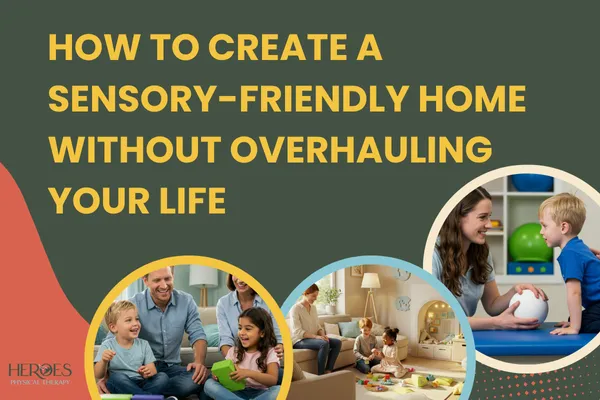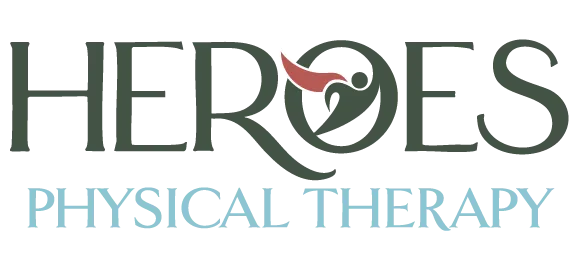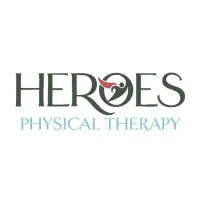Pediatric Therapy for Complex Needs in Allegan, MI
Helping children move forward and helping parents feel confident along the way.
At HEROES Physical Therapy, we provide advanced pediatric physical therapy for children with mobility, sensory, and developmental challenges. Our care is expert-led, family-centered, and built around real results.
Pediatric Therapy for Complex Needs in Allegan, MI
Helping children move forward and helping parents feel confident along the way.
At HEROES Physical Therapy, we provide advanced pediatric physical therapy for children with mobility, sensory, and developmental challenges. Our care is expert-led, family-centered, and built around real results.
What We Offer
Specialty Pediatric Therapy Built for Progress
We serve children with complex needs using evidence-based, personalized care.
Our clinic supports kids with developmental delays, neuromotor conditions, and sensory integration needs using the most effective tools in pediatric therapy. We’re one of the only clinics in the region offering advanced interventions like:
DMI (Dynamic Movement Intervention)
Universal Exercise Unit (UEU)
TheraSuit Method
Sensory-integrated therapy
Wheelchair and equipment evaluations
Every plan is custom-builtand parents are an essential part of the process.
What We Offer
Specialty Pediatric Therapy Built for Progress
We serve children with complex needs using evidence-based, personalized care.
Our clinic supports kids with developmental delays, neuromotor conditions, and sensory integration needs using the most effective tools in pediatric therapy. We’re one of the only clinics in the region offering advanced interventions like:
DMI (Dynamic Movement Intervention)
Universal Exercise Unit (UEU)
TheraSuit Method
Sensory-integrated therapy
Wheelchair and equipment evaluations
Every plan is custom-builtand parents are an essential part of the process.
Why Families
Choose HEROES
Specialty Pediatric Therapy Built for Progress
We’re built for complexityand grounded in care.
While many clinics offer general therapy, HEROES Physical Therapy was designed specifically for children with more intensive needs.
From advanced certifications to rare equipment, we offer what other providers don’tand back it with experience and compassion.
Why families choose us:
26+ years of clinical expertise
DMI-certified and specialty-trained
Family-inclusive care and coaching
Quiet, calming environment tailored to kids and teens
Real progress, not just routine
Why Families
Choose HEROES
Specialty Pediatric Therapy Built for Progress
We’re built for complexityand grounded in care.
While many clinics offer general therapy, HEROES Physical Therapy was designed specifically for children with more intensive needs.
From advanced certifications to rare equipment, we offer what other providers don’tand back it with experience and compassion.
Why families choose us:
26+ years of clinical expertise
DMI-certified and specialty-trained
Family-inclusive care and coaching
Quiet, calming environment tailored to kids and teens
Real progress, not just routine
Meet the Team
Skilled. Steady. Committed to Your Child.
Meet the team behind the progress.
Led by Heather DeJonge, PT, our team brings deep expertise and a calm, encouraging presence to every session. We believe in your child’s potentialand in your role as their guide.

Meet the Team
Skilled. Steady. Committed to Your Child.
Meet the team behind the progress.
Led by Heather DeJonge, PT, our team brings deep expertise and a calm, encouraging presence to every session. We believe in your child’s potentialand in your role as their guide.
The HEROES Path Blog
Learn, Support, and Stay Encouraged
Visit The HEROES Path for expert insight, home tips, and stories from the journey.
From articles on advanced therapy tools to real-life family wins, our blog exists to support and empower you because progress doesn’t stop at the clinic doors.

How to Create a Sensory-Friendly Home Without Overhauling Your Life
If your child struggles with sensory processing—whether they are overwhelmed by noise, avoid certain textures, seek out movement, or seem to melt down “for no reason”—you are not alone.
Many families we support at HEROES Physical Therapy have children who face daily challenges regulating their sensory input.
You may feel like your home needs to become a therapy gym or that you must buy expensive tools to help your child cope. But the truth is: creating a sensory-friendly home is not about adding more. It is about adjusting what already exists to make your environment more supportive, flexible, and responsive to your child’s needs.
This guide will walk you through simple, practical steps to create a calm and empowering space for your child—without adding stress to your life.

What Does “Sensory-Friendly” Really Mean?
A sensory-friendly home supports a child’s nervous system. It reduces unnecessary overwhelm and increases the chances of regulation. It provides sensory input in controlled ways—when it is needed, not when it is forced. It includes predictable spaces, options for movement, and flexibility for how a child interacts with their world.
It is not about perfection. It is about creating a rhythm that helps your child feel safe in their body, which supports learning, behavior, and emotional growth.
Step 1: Identify Your Child’s Sensory Needs
Start by observing how your child responds to the five main sensory areas (plus two more that are often overlooked):
Tactile (touch): Do they avoid messy textures, or do they crave them?
Auditory (sound): Are they sensitive to loud noises or background noise?
Visual (light): Are bright lights overwhelming, or do they seek visual stimulation?
Olfactory (smell): Do strong smells bother them or calm them?
Gustatory (taste): Are they picky eaters due to texture and flavor?
Vestibular (movement/balance): Do they love spinning, jumping, or fear being lifted?
Proprioception (body awareness): Do they crash into things or appear uncoordinated?
Your child may be over-responsive (sensory avoiding), under-responsive (sensory seeking), or a combination. A sensory-friendly home meets them where they are, without demanding they fit into a rigid box.
Step 2: Create Zones Without Building Walls
You do not need a sensory room. You need sensory zones—small, designated areas that support specific needs:
1. Calm-down corner
Use a soft rug, a bean bag, dim lighting, and a few familiar comfort items. Add noise-canceling headphones or a soft weighted lap pad if needed. This is a space where your child can retreat when the world feels too loud.
2. Movement space
Have a spot where your child can bounce, spin, climb, or push. This could be a small trampoline, therapy ball, couch cushions for climbing, or a hallway for racing. Movement helps regulate the nervous system—especially vestibular and proprioceptive needs.
3. Tactile zone
Use bins or baskets with rotating textures: rice, kinetic sand, dry pasta, soft cloths, or silicone toys. Make sure they are easy to clean up and that your child can opt in or out.
4. Visual quiet space
Designate one part of the home (often a bedroom) with soft colors, low clutter, and gentle lighting. Avoid fast-moving lights or high-contrast patterns in this area. Think visual rest.
You do not need all four zones—but having just one or two makes a huge difference.
Step 3: Adjust Lighting and Noise
Light and sound are two of the most triggering inputs for sensitive children. Thankfully, these are also two of the easiest things to control:
Use soft, warm lighting (lamps, string lights, dimmable bulbs) instead of overhead fluorescents.
Add rugs or curtains to reduce echo and sound bounce.
Use white noise machines to block out sudden noises.
Create quiet mornings and quiet transitions with music or no audio at all.
Provide noise-canceling headphones in high-stim environments like grocery stores or car rides.
Label noisy tools in advance (“This will beep in 5 seconds”) to reduce anxiety.
These are not “special needs” tools. They are nervous system supports. Everyone benefits when environments are less chaotic.
Step 4: Simplify Routines, Not Just Spaces
Children with sensory challenges often struggle not just with environment, but with time-based transitions. Here are ways to simplify:
Use visual schedules or simple picture cards
Keep transitions between activities consistent (same song, same phrase)
Build in movement breaks between seated tasks
Create a predictable morning and bedtime routine
Use timers or countdowns (“2 more minutes of play before lunch”)
Reducing the mental load of routines creates more capacity for regulation.
Step 5: Choose Your Tools Wisely
It is easy to get overwhelmed by the number of sensory products out there. But you do not need everything. Choose tools that fit your child’s specific needs:
Sensory seekers often benefit from trampolines, swings, chewy necklaces, weighted blankets, and resistive play
Sensory avoiders benefit from low-stimulation spaces, compression clothing, slow rocking, and deep pressure hugs
Mixed profiles need flexibility. Focus on access, not force.
Before buying anything, ask: Can we replicate this in a low-cost way? Often the answer is yes.
Step 6: Involve Your Child
Children thrive when they feel ownership over their space. Ask them what feels good. Let them choose colors, toys, or which part of the room becomes their “cozy corner.”
Let them help decorate or name the zones. The more they feel in control, the more they’ll use the tools you provide.
Step 7: Partner with Your Therapist
A sensory-friendly home is most effective when guided by your child’s therapy team. At HEROES Physical Therapy, we include sensory strategies in nearly every care plan—not just for kids with diagnosed sensory processing disorder, but for any child who needs support regulating their body.
We help parents find what works in their space without adding pressure. Together, we customize suggestions that actually fit your routine.
We do not believe in one-size-fits-all. We believe in small steps, done consistently, that build a better day.

You’re Already Doing More Than You Know
If you are reading this, you are already taking action. Creating a sensory-friendly home does not mean changing everything overnight. It means making thoughtful shifts to support your child’s brain and body.
Some days will still be loud. Some transitions will still be hard. But with the right tools in place, your child can feel calmer, stronger, and more in control.
To learn more, visit heroespt.com.
What Parents Are Saying
Real Results. Real Trust.
We’ve helped families across Allegan and beyondhere’s what they’re saying:
Ready to Get Started?
The Right Therapy Can Change Everything
Call or text today to ask questions or schedule an evaluation.
Whether your child needs support with mobility, equipment, or sensory integration HEROES Physical Therapy is ready to walk with you.
QUICK LINKS
CONNECT
© 2025 HEROES Pediatric Therapy. All rights reserved.
Privacy Policy | Terms of Use
Powered by Launch 360.co


